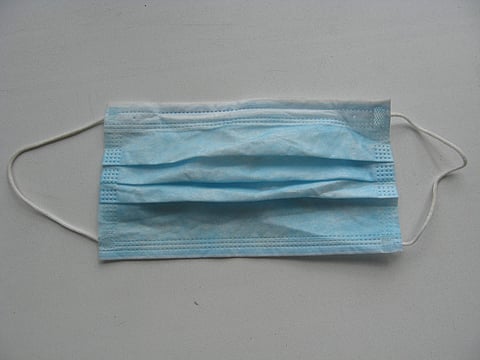

As people resort to making their own cloth masks due to shortage of surgical and N95 varieties in the wake of the COVID-19 pandemic, a new study says a combination of cotton with natural silk or chiffon can filter out aerosol particles provided that the mask fits well.
According to the researchers, including those from the University of Chicago in the US, SARS-CoV-2, the new Coronavirus that causes COVID-19, is thought to spread mainly through respiratory droplets when an infected person coughs, sneezes speaks or breathes.
They said these droplets form in a wide range of sizes, but the tiniest ones, called aerosols, can easily slip through the openings between certain cloth fibres, leading some experts to doubt if cloth masks can actually help prevent disease.
In the study, published in the journal ACS Nano, the scientists assessed the ability of common fabrics, alone or in combination, to filter out aerosols similar in size to respiratory droplets.
They used an aerosol mixing chamber to produce particles ranging from 10 nanometres to 6 micrometres in diameter, which is tens to hundreds of times smaller than the width of a single human hair.
A fan blew the aerosol across various cloth samples at an airflow rate corresponding to a person's respiration at rest, and the research team measured the number and size of particles in the air before and after passing through the fabric.
The scientists found that one layer of a tightly woven cotton sheet combined with two layers of polyester-spandex chiffon, a sheer fabric often used in evening gowns, filtered out the most aerosol particles -- 80-99 per cent, depending on particle size.
They said the performance of these fabric layers was close to that of N95 mask material.
According to the study, substituting the chiffon with natural silk or flannel, or simply using a cotton quilt with cotton-polyester batting, produced similar results.
The researchers said tightly woven fabrics, such as cotton, can act as a mechanical barrier to particles, whereas fabrics that hold a static charge, like certain types of chiffon and natural silk, serve as an electrostatic barrier.
However, they cautioned that even a small gap, by as much as one per cent, reduced the filtering efficiency of all masks by half or more, emphasising the importance of a properly fitted mask.
"Our studies also imply that gaps can result in over a 60 per cent decrease in the filtration efficiency, implying the need for future cloth mask design studies to take into account issues of fit and leakage, while allowing the exhaled air to vent efficiently," the scientists wrote in the study.
